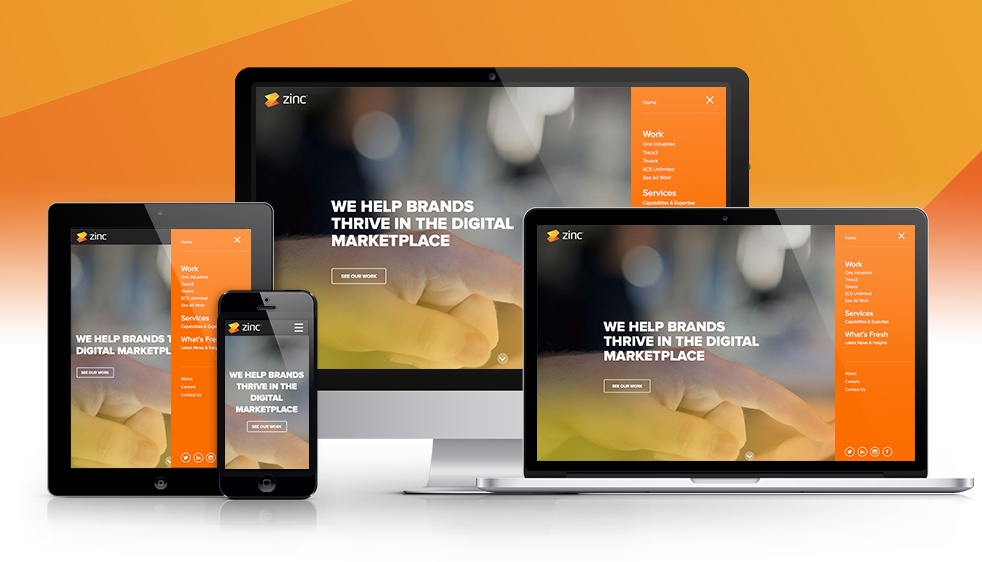
Here at Zinc, a leading Orange County Web Design Agency, we spend a lot of time analyzing web trends and forecasting what the next year will bring so we can keep our clients’ web presences current and ahead of their competition. With 2014 staring down the barrel at us, we wanted to share some of our observations about how 2014 will take eCommerce web design to the next level.
Responsive web design was a huge focus in 2013, and it will continue to be as more companies cater to the fact that their users access websites from devices of all shapes and sizes. Instead of just focusing on how the site will render in mobile browsers (the core of what responsive web design brought to the table), designers will look to improve the eCommerce experience on mobile platforms. Mobile eCommerce (affectionately dubbed mCommerce), will have to overcome some barriers in order to change buyer behavior, but with the following elements we’re excited to see how 2014 changes the eCommerce web design game.
Barriers to Mobile eCommerce
Currently, although many top sites are built to be responsive to whatever device a user may be viewing from, the majority of users shy away from using their smart phones to make purchases. More of these consumers will buy items on tablets, and the majority will only make purchases from an actual computer. According to our research, the lack of mobile purchasing behavior is the result of these factors:
- Lack of trust in company
- Unsecure internet connection
- The process to purchase is too difficult on a small screen
- It’s too inconvenient to type in credit card numbers on a small screen
These factors are all valid concerns, which is why our Orange County Web Design team is making strides to satisfy them to make 2014 the year mobile purchasing behavior changes.
2014 Mobile eCommerce Trends
In order to modify the way people purchase online, web designers are rethinking the way the checkout process works on mobile devices. We will see separate, more streamlined checkout processes for smart phones and tablets with larger icons. In addition to larger icons, we’ll also see more integrations with PayPal and similar services to eliminate the need for typing in credit cards numbers.

